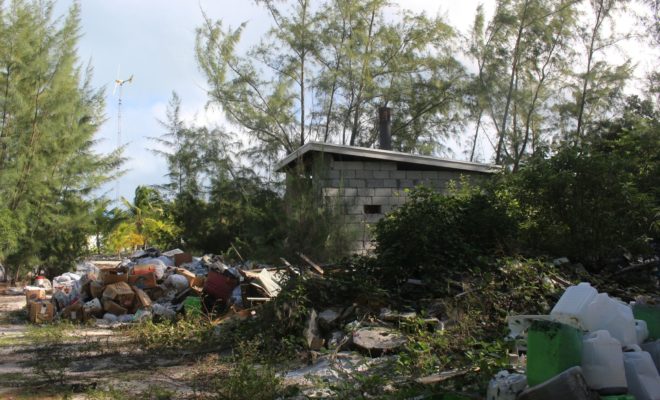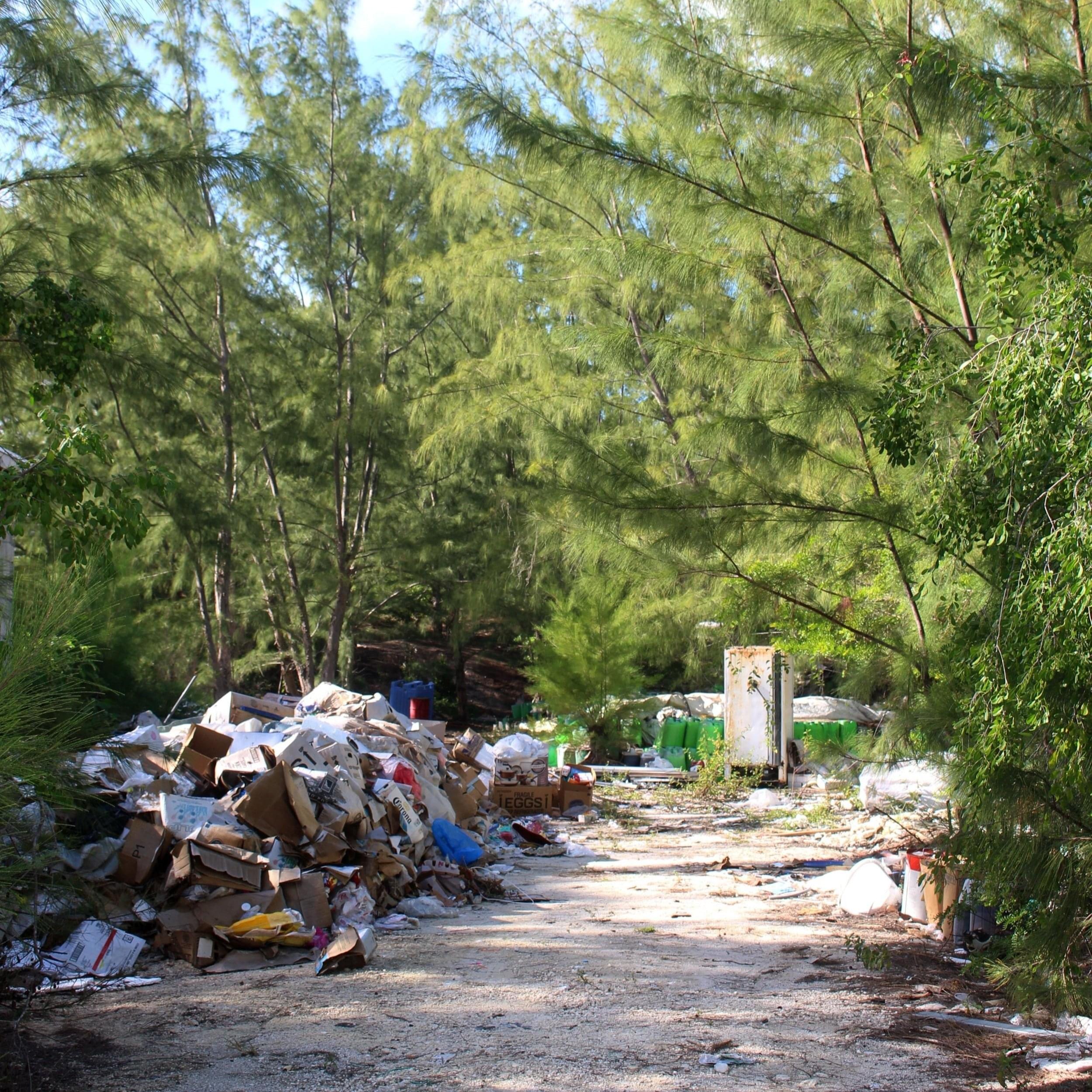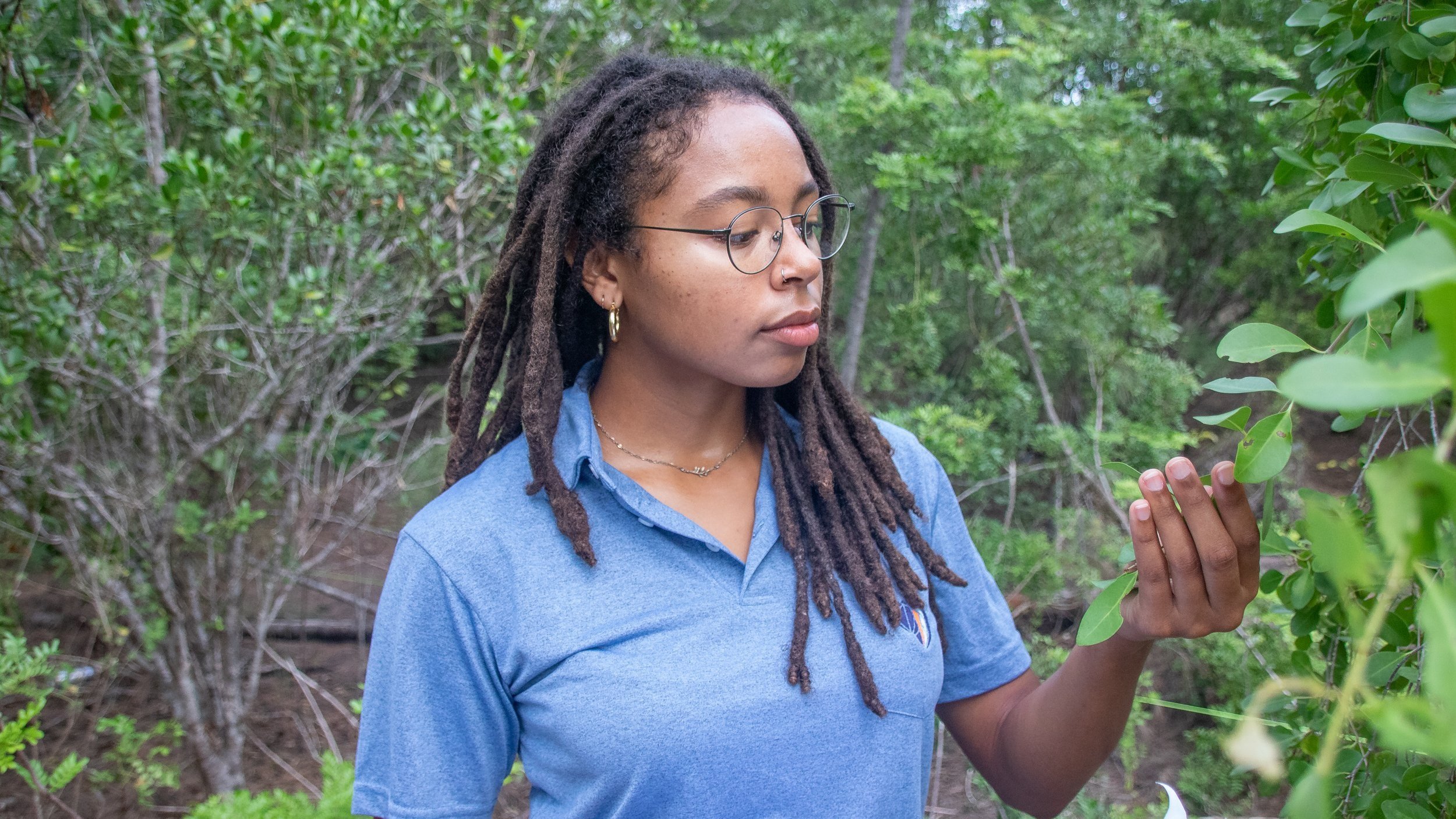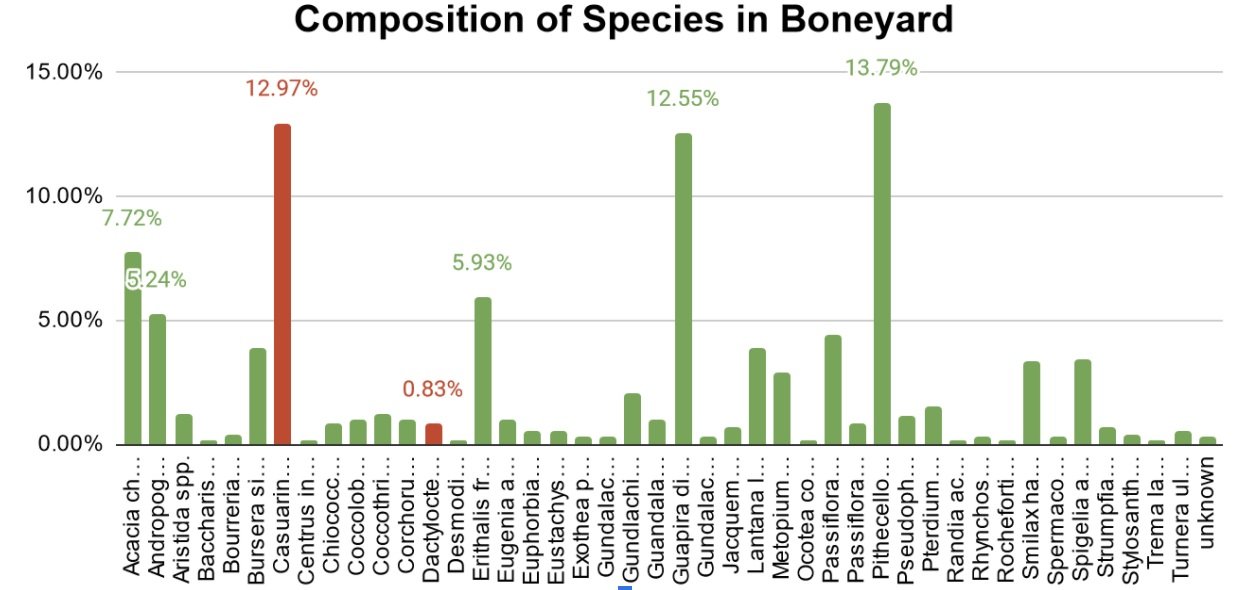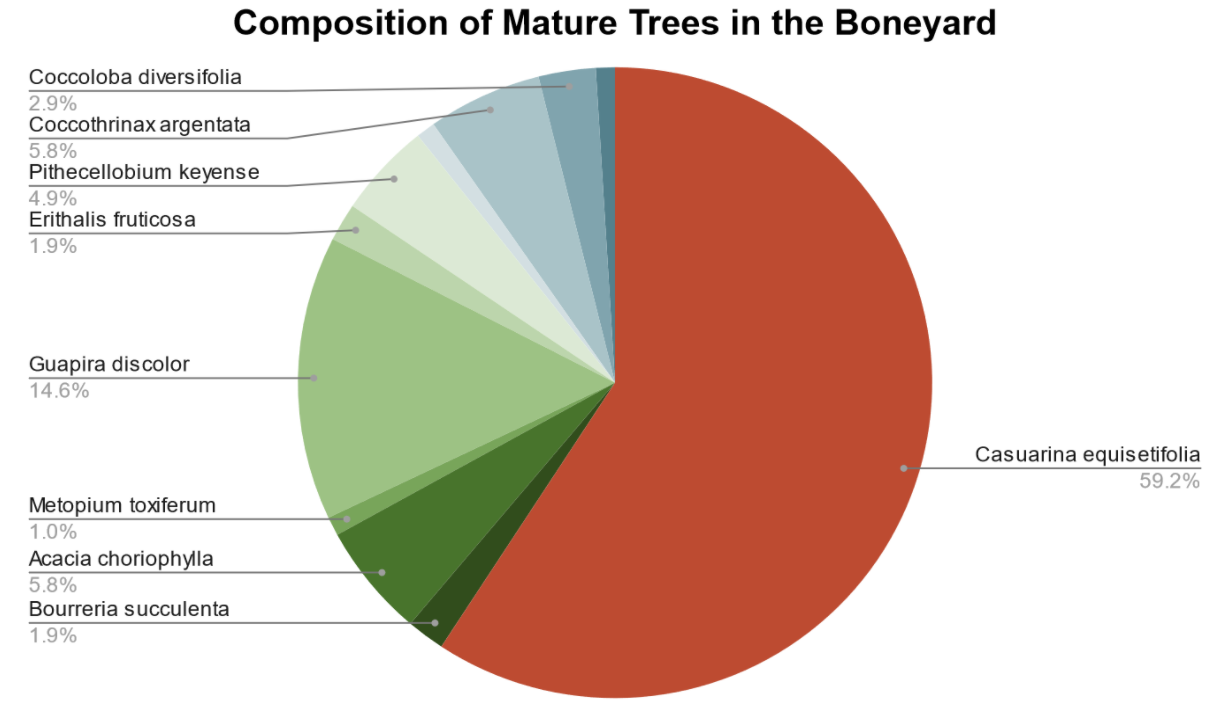‘The Boneyard’ is a degraded coastal dumpsite near The Island School.
At first glance, this coastal area appears to be nothing more than a mismanaged dumpsite that has been taken over by an invasive species known as Australian Pine (Casuarina equisetifolia). However, one of our interns has been conducting research in the area and found that there is more native diversity here than initially meets the eye.
The management of solid waste poses a great challenge to small island nations, like The Bahamas, which has limited capacity to store and process municipal waste. As a result, coastal areas often become sites for unregulated disposal of waste. This is concerning as coastal ecosystems provide a plethora of cultural, regulating, and provisioning services to communities; they serve as breaks to strong winds and storm surges, hold our soil together, act as nurseries for marine species that we rely on for food, and much more. Dumping in these coastal areas compromises the structure and function of these ecosystems, increasing our vulnerability to climate related threats, such as rising sea levels and increased storm intensity.
Zoe Brown conducting research in The Boneyard.
CEI intern, Zoe Brown, has sampled over 700 individual plants across a 8938m² area of a degraded coastal dumpsite to understand the diversity, density, and distribution of native plant species that are persisting in this stressful environment. Zoe’s preliminary research has shown that there are 56 different species within the area of her study, which is about double the number of species that she and her mentors had hypothesized. Of the 56 species, 47 were native Bahamian plant species, 4 were non-native species, 3 were invasive, and 2 currently remain unidentified.
While there are only 3 invasive species occurring in the area, they make up 13.8% of all plants present. What is even more striking is that invasive Casuarina make up more than half (59%) of all mature trees in the area. Furthermore, she also found that approximately 50% of all identified native plants were either seedlings or saplings. The lack of mature native trees, but high proportion of native seedlings & saplings suggests native seeds are able to germinate and survive in the dumpsite, but environmental stressors, such as the presence of invasive Casuarina, which limits light penetration through canopy, are inhibiting their ability to reach maturity.
With this information, we can prioritize our restoration efforts to remove invasive species and facilitate the growth of native coastal vegetation that protects our coastlines. The restoration of native plant biodiversity can be a tool to increase coastal resilience and protect coastal communities like ours, to adapt to a changing climate.
Zoe Brown, CEI Intern
